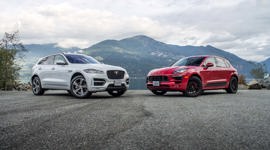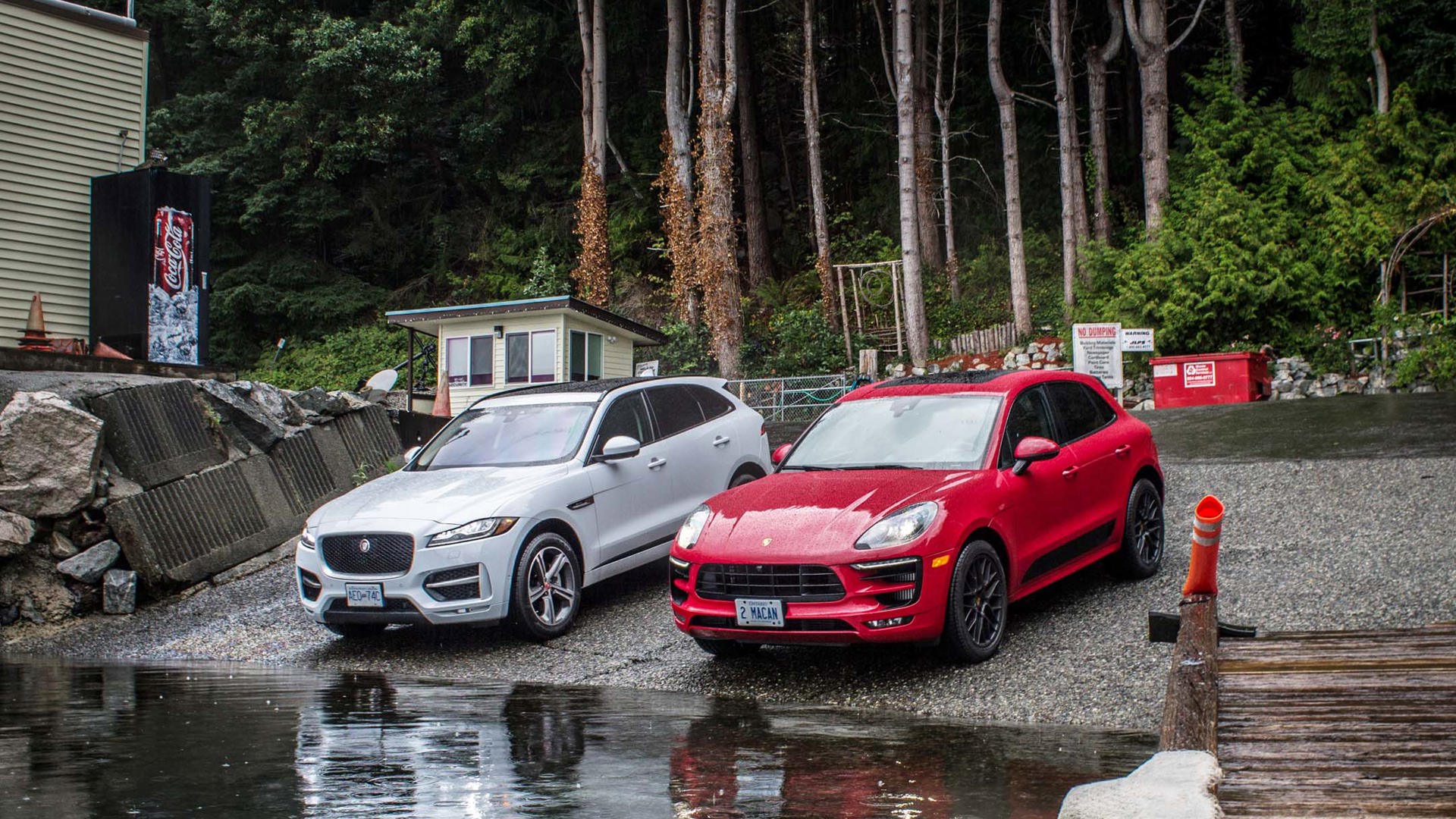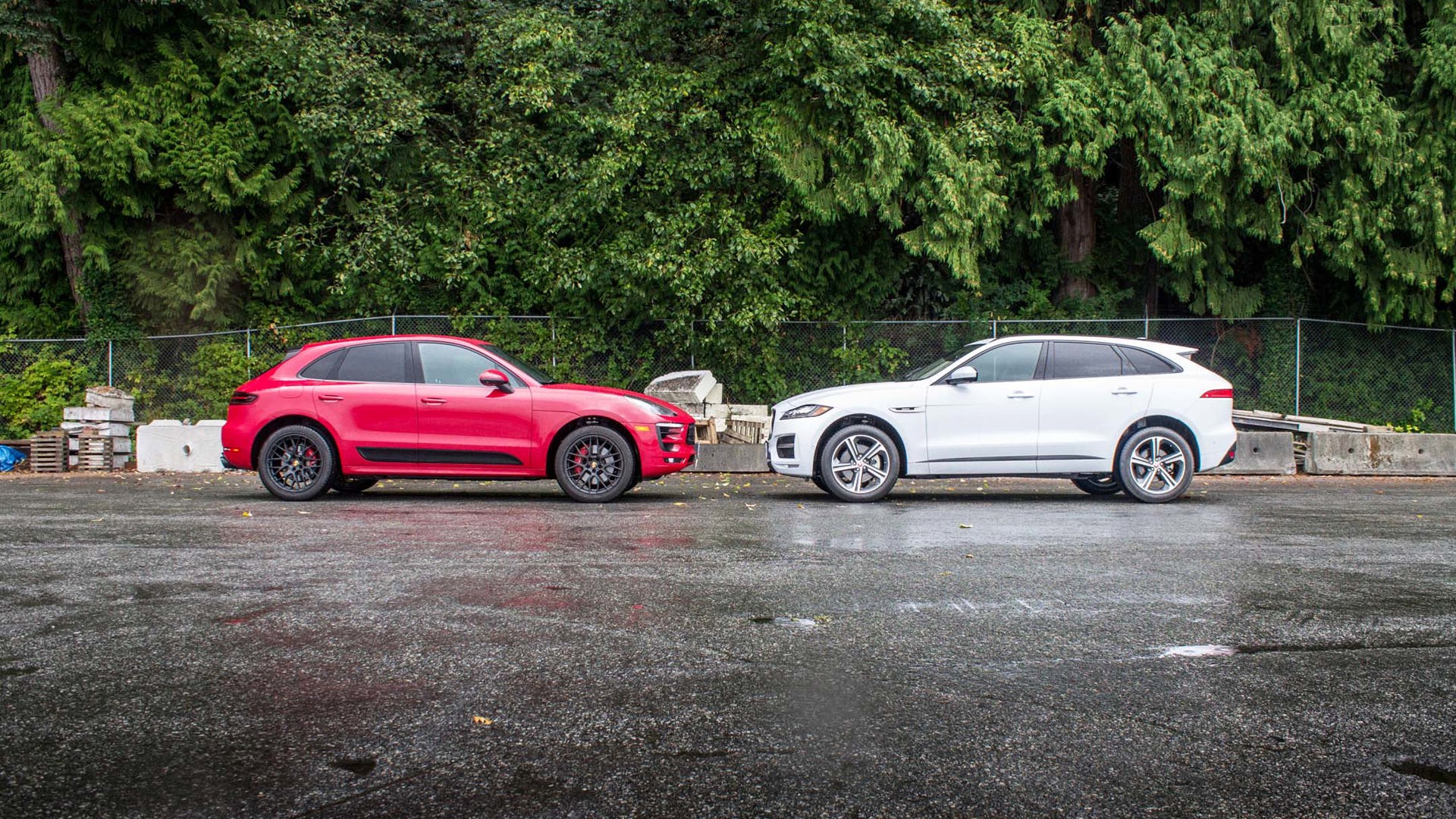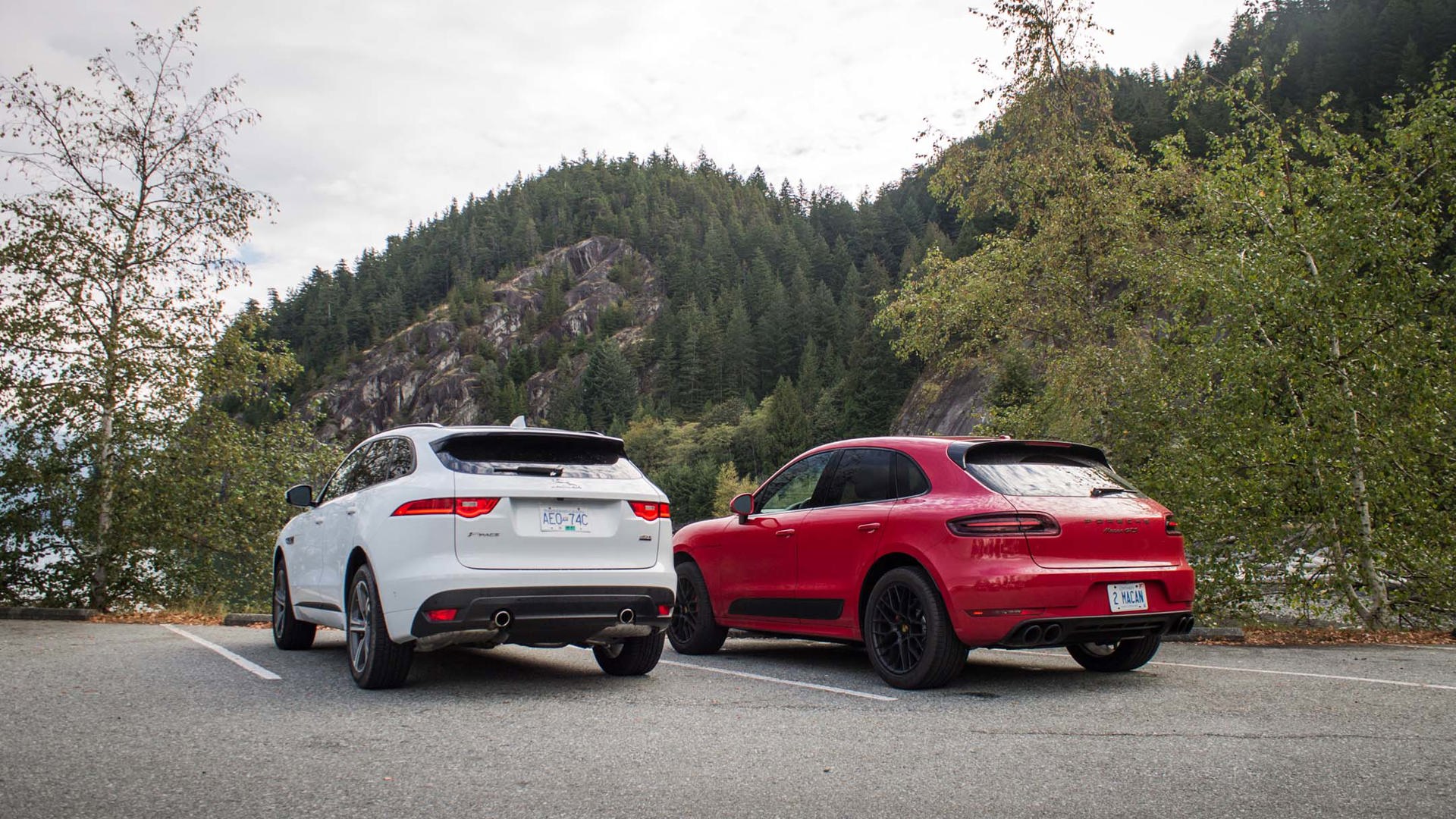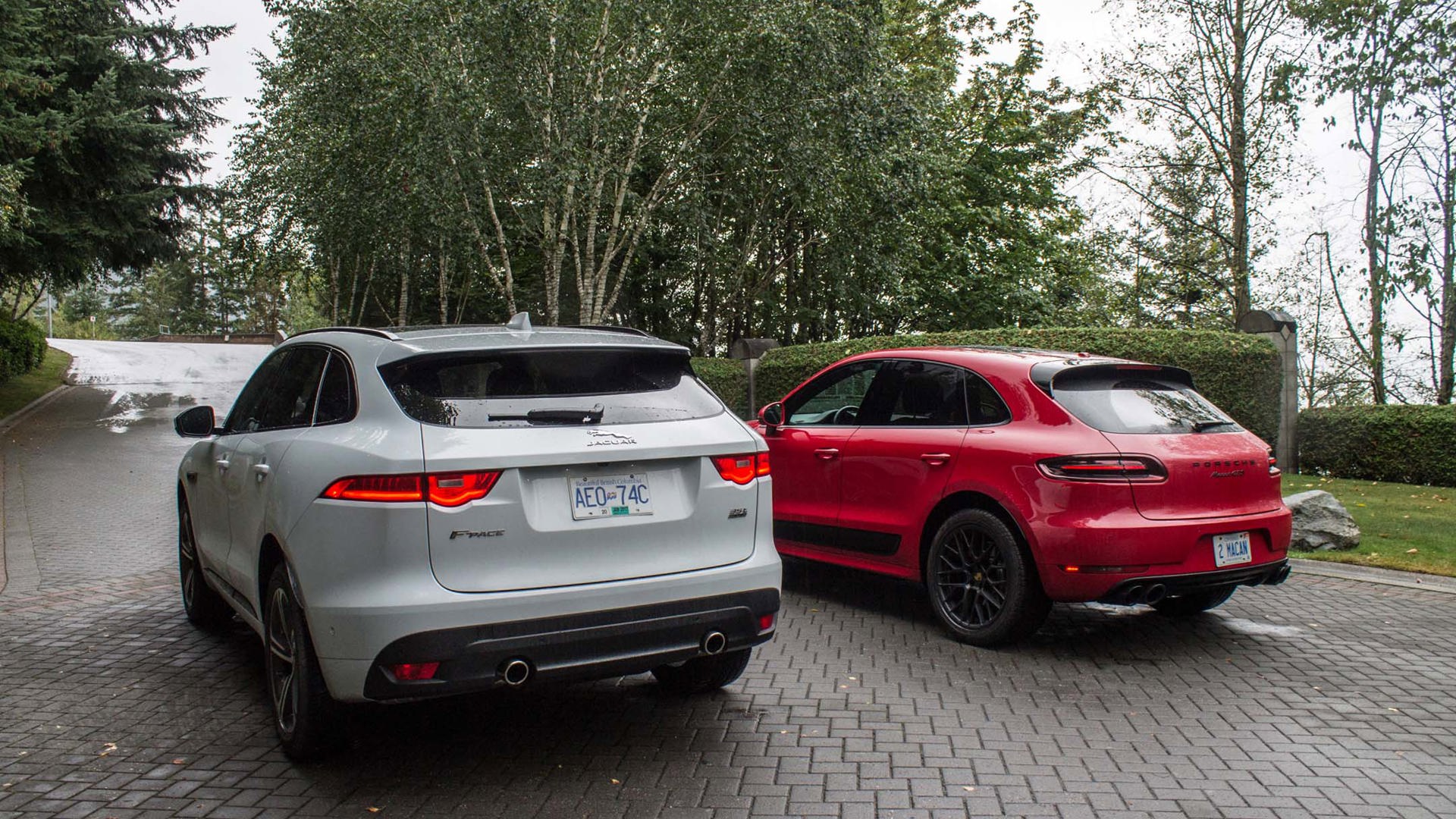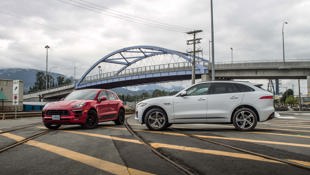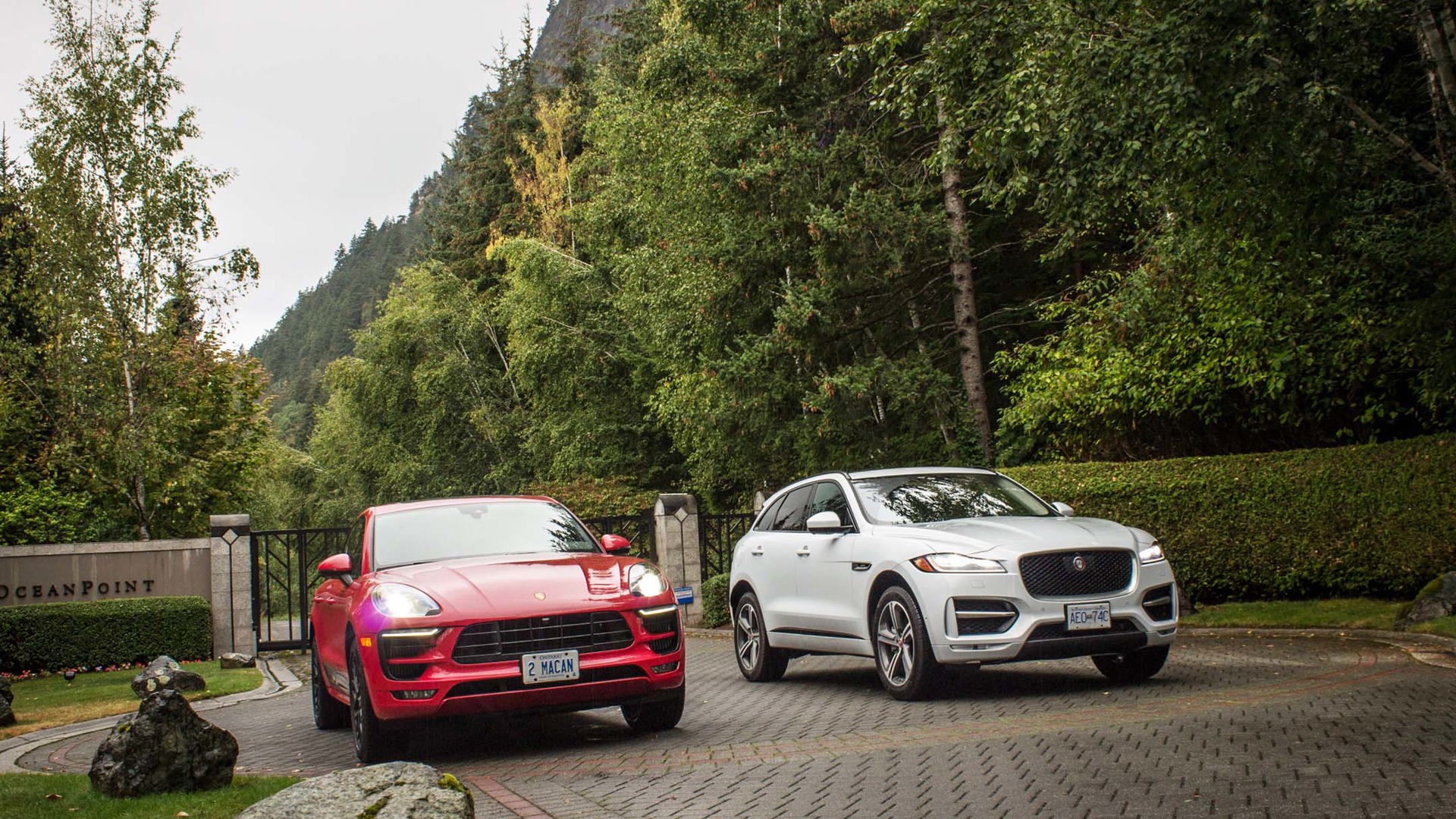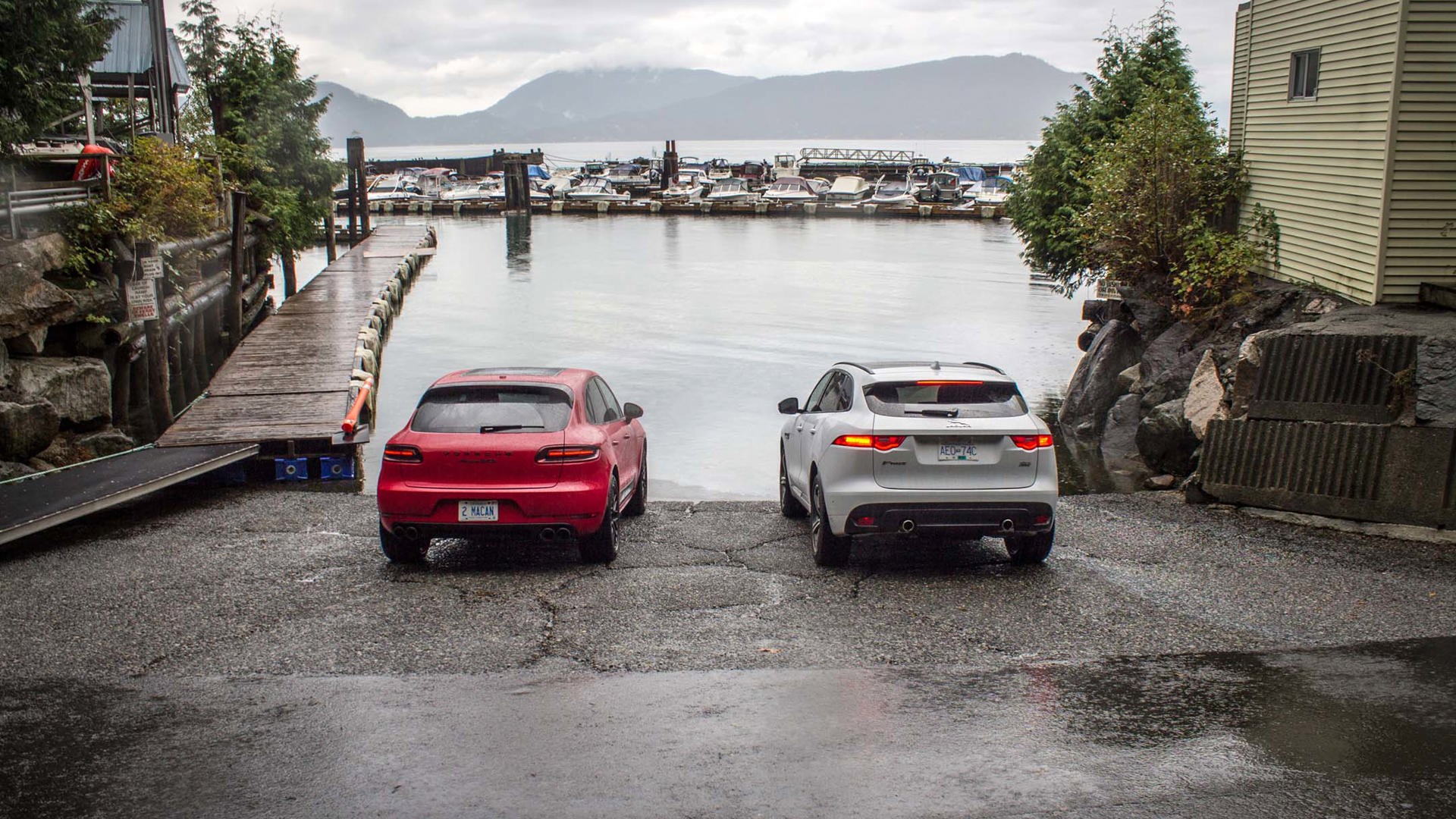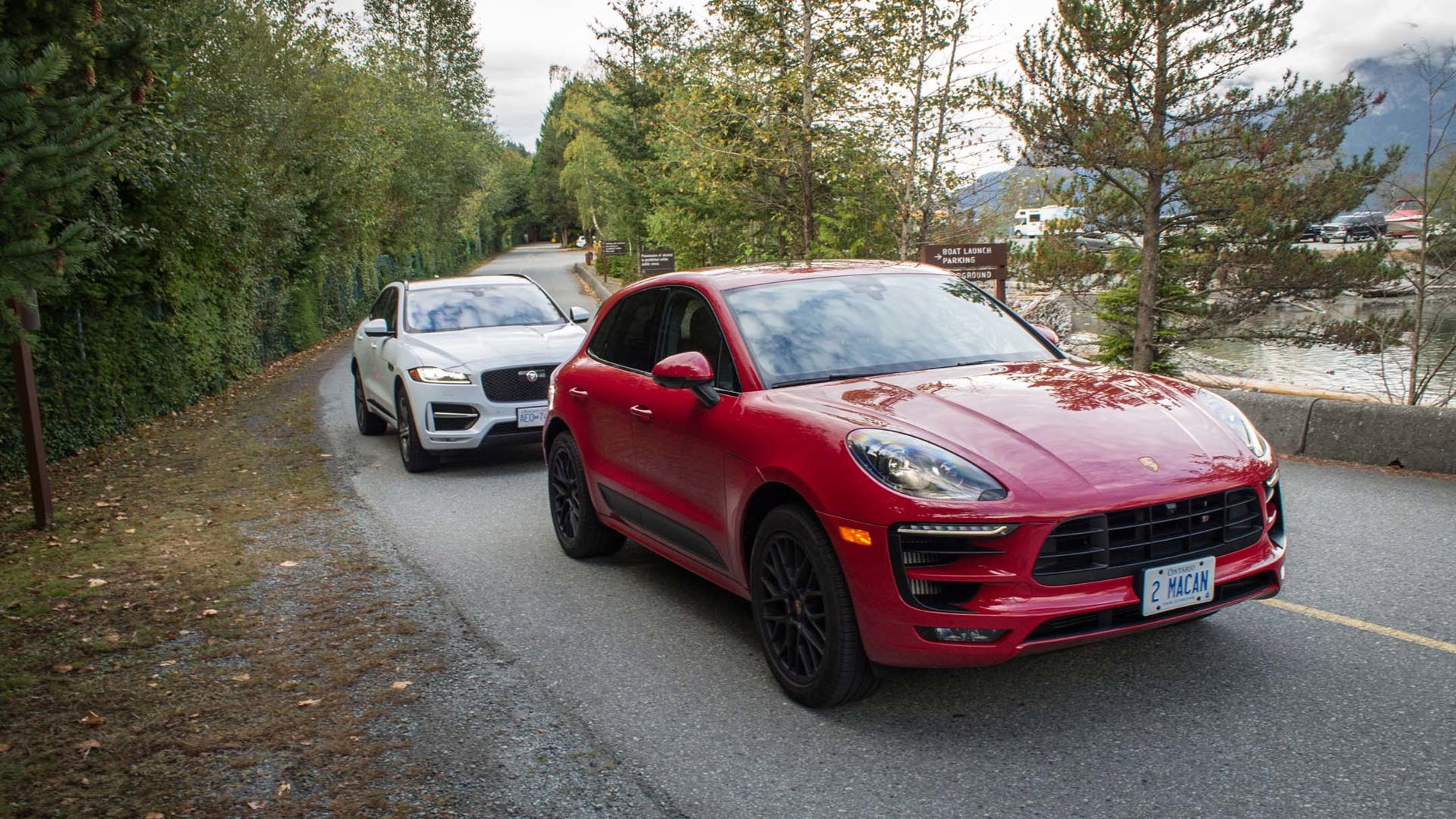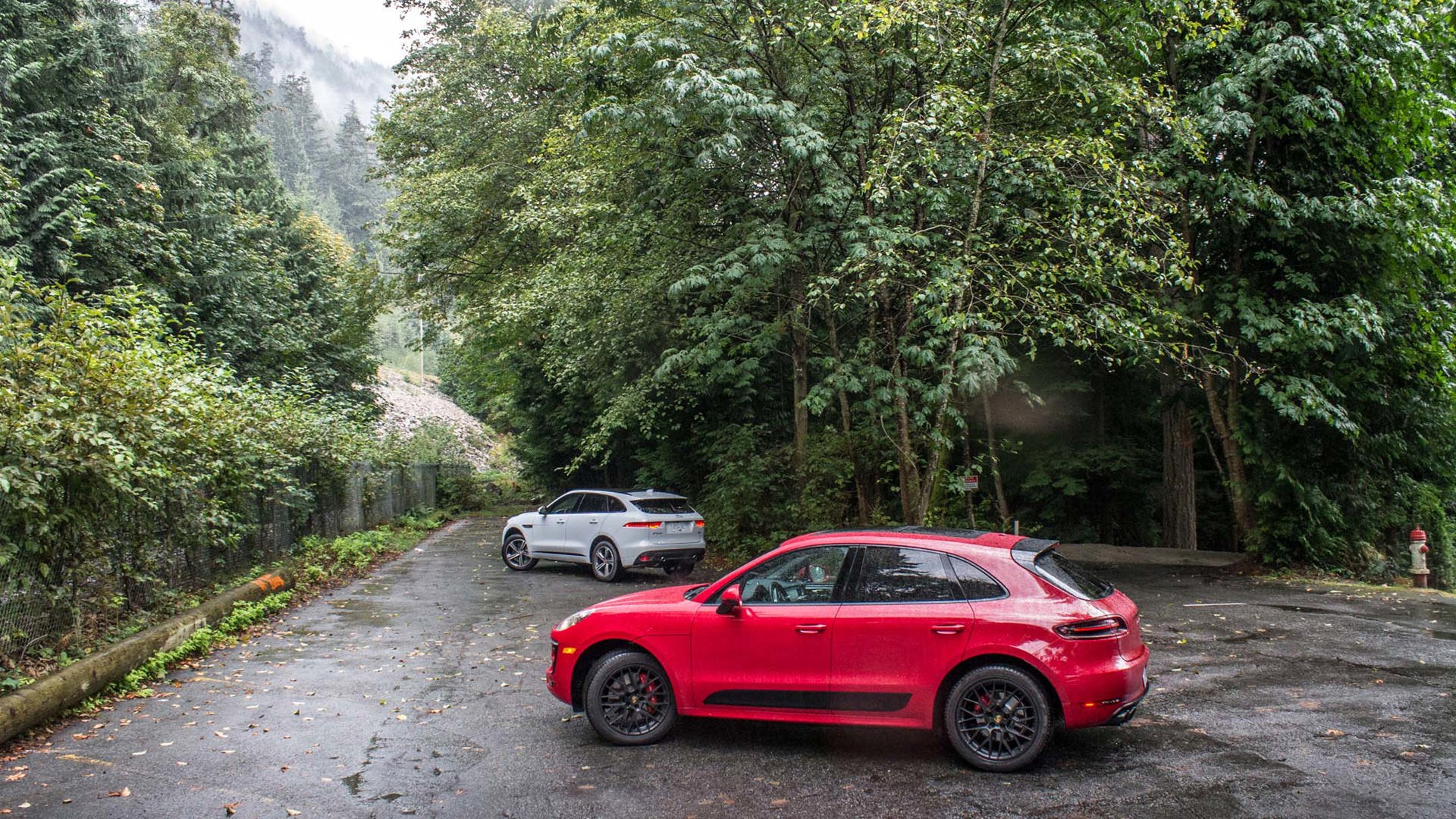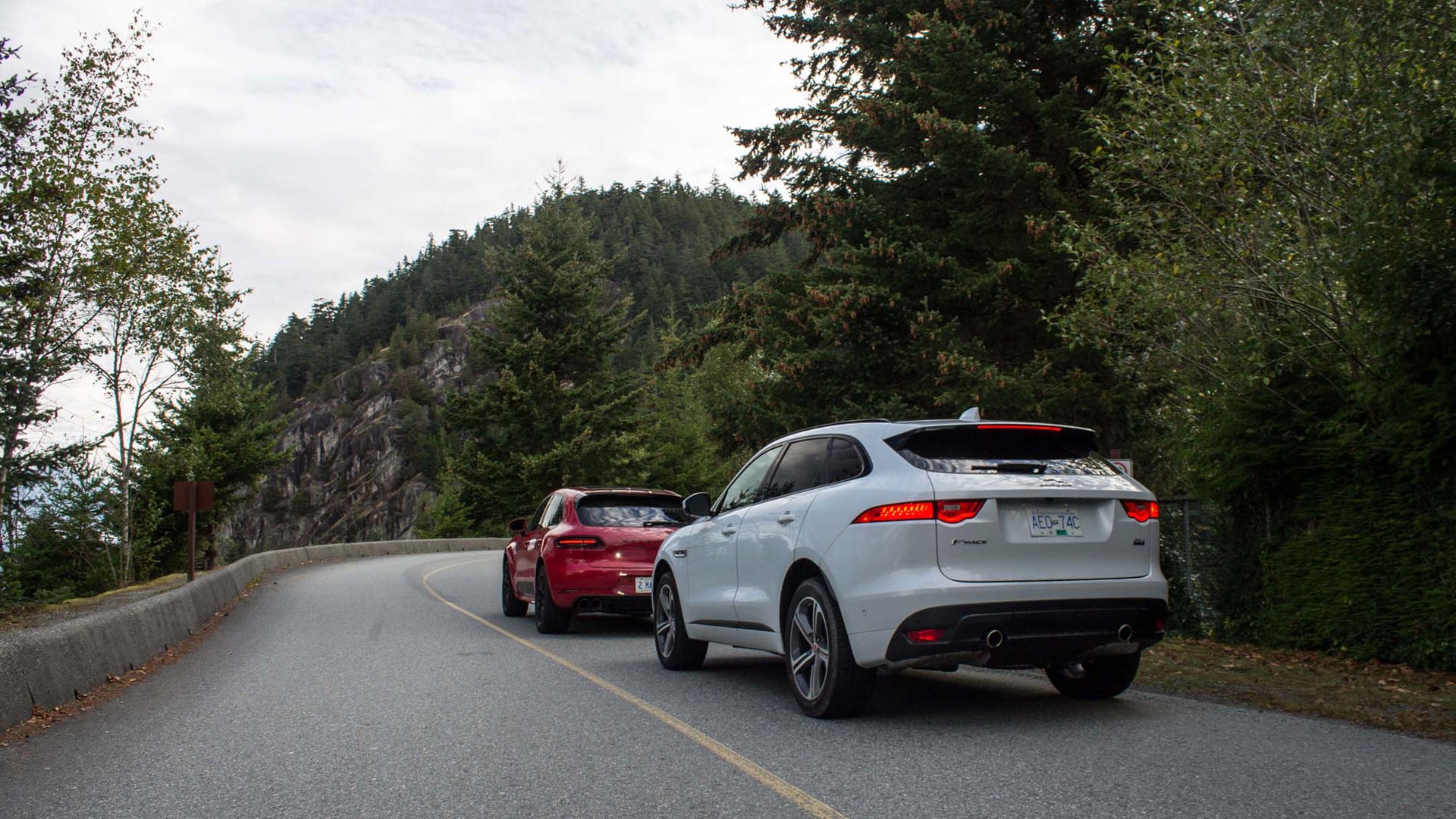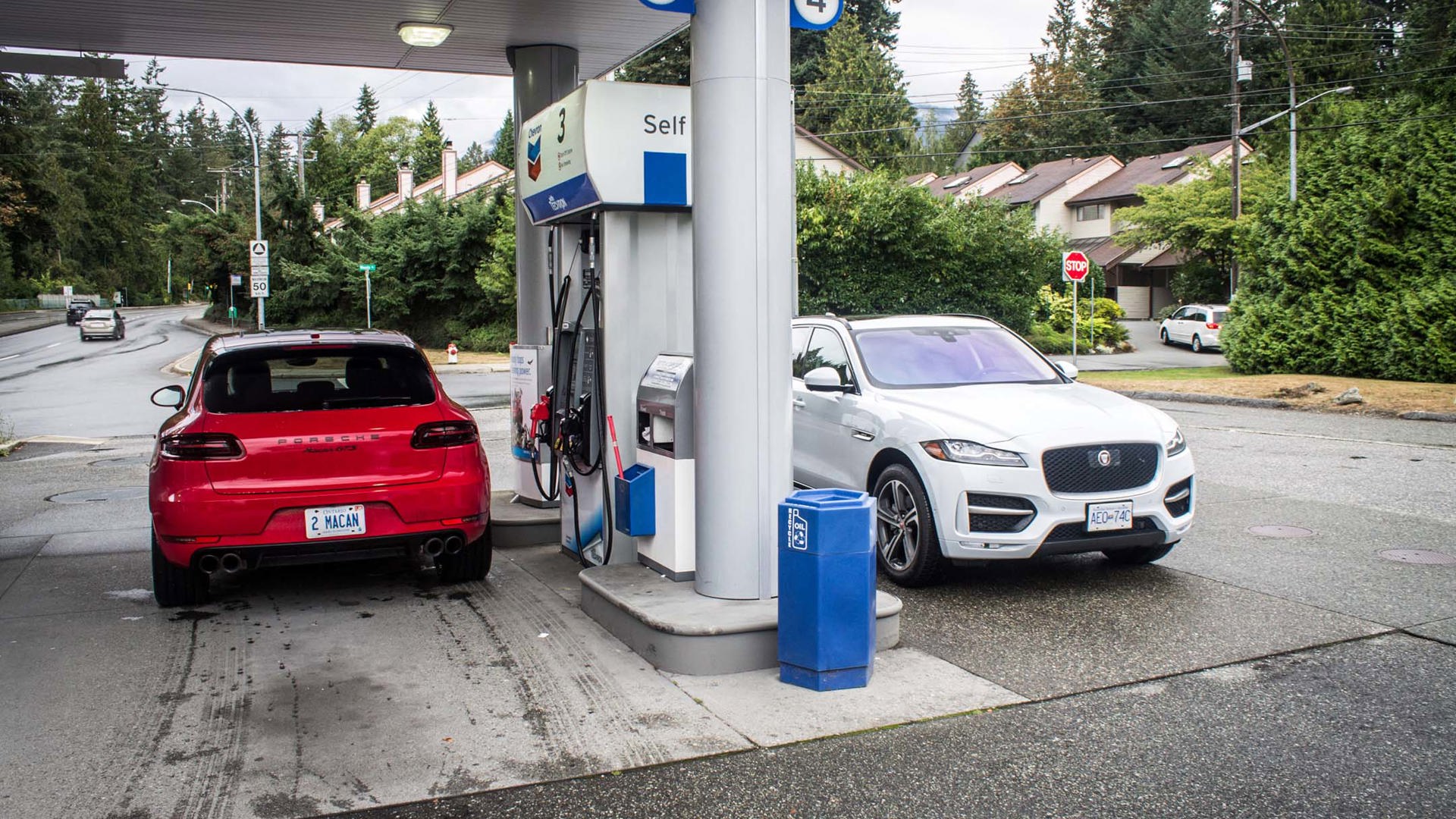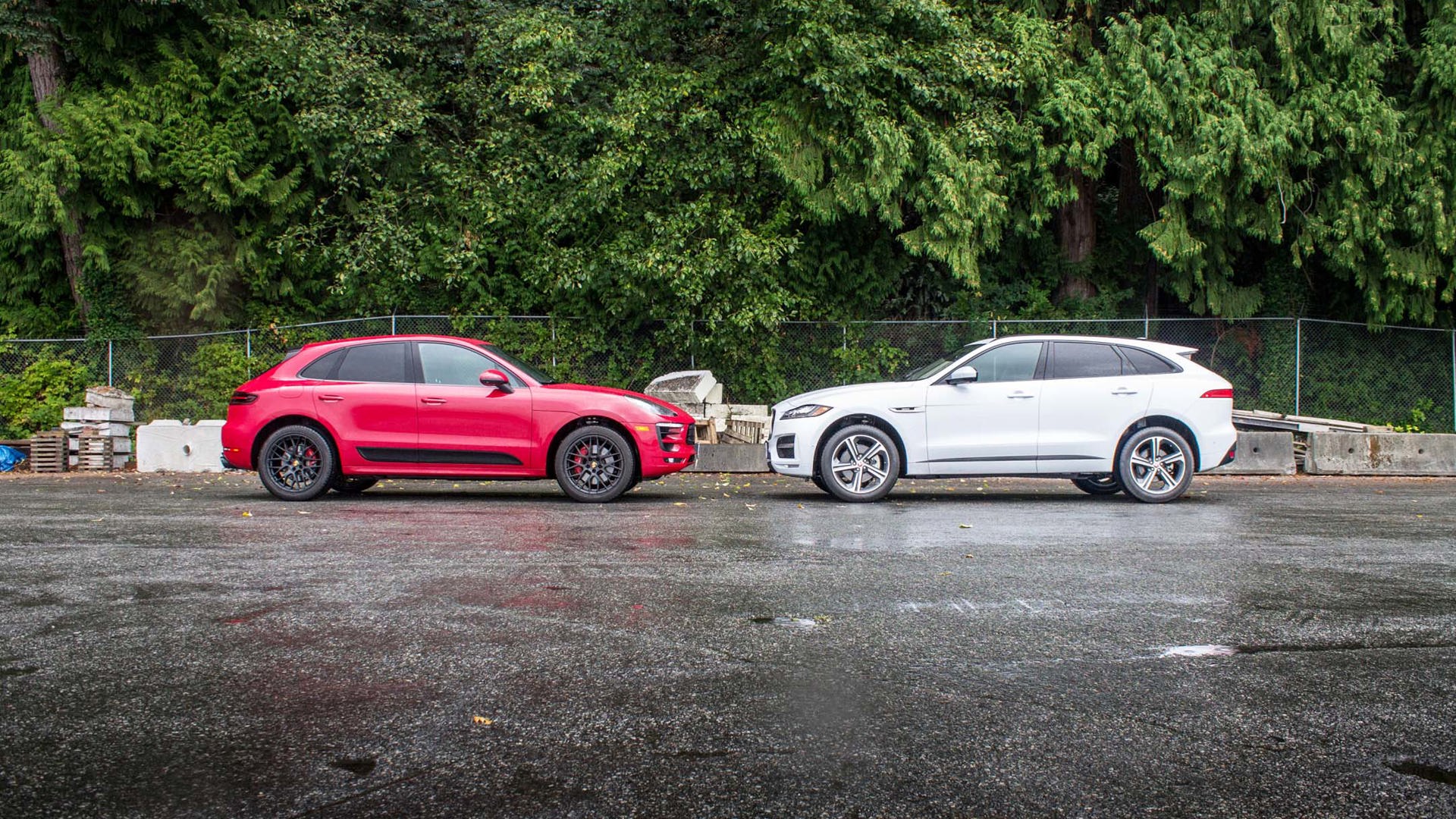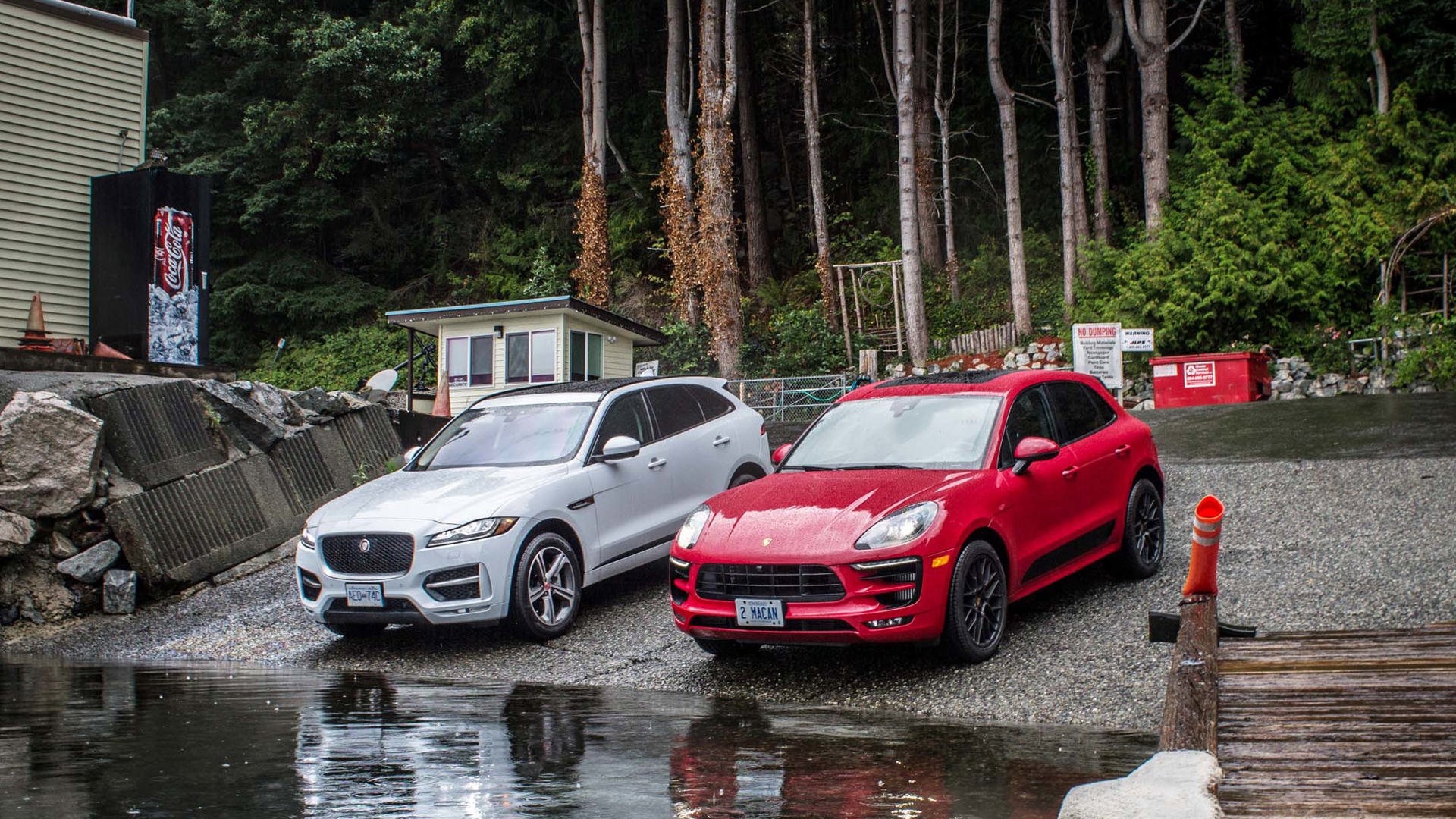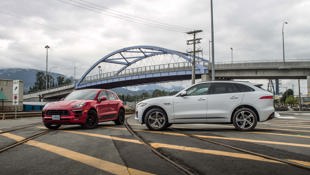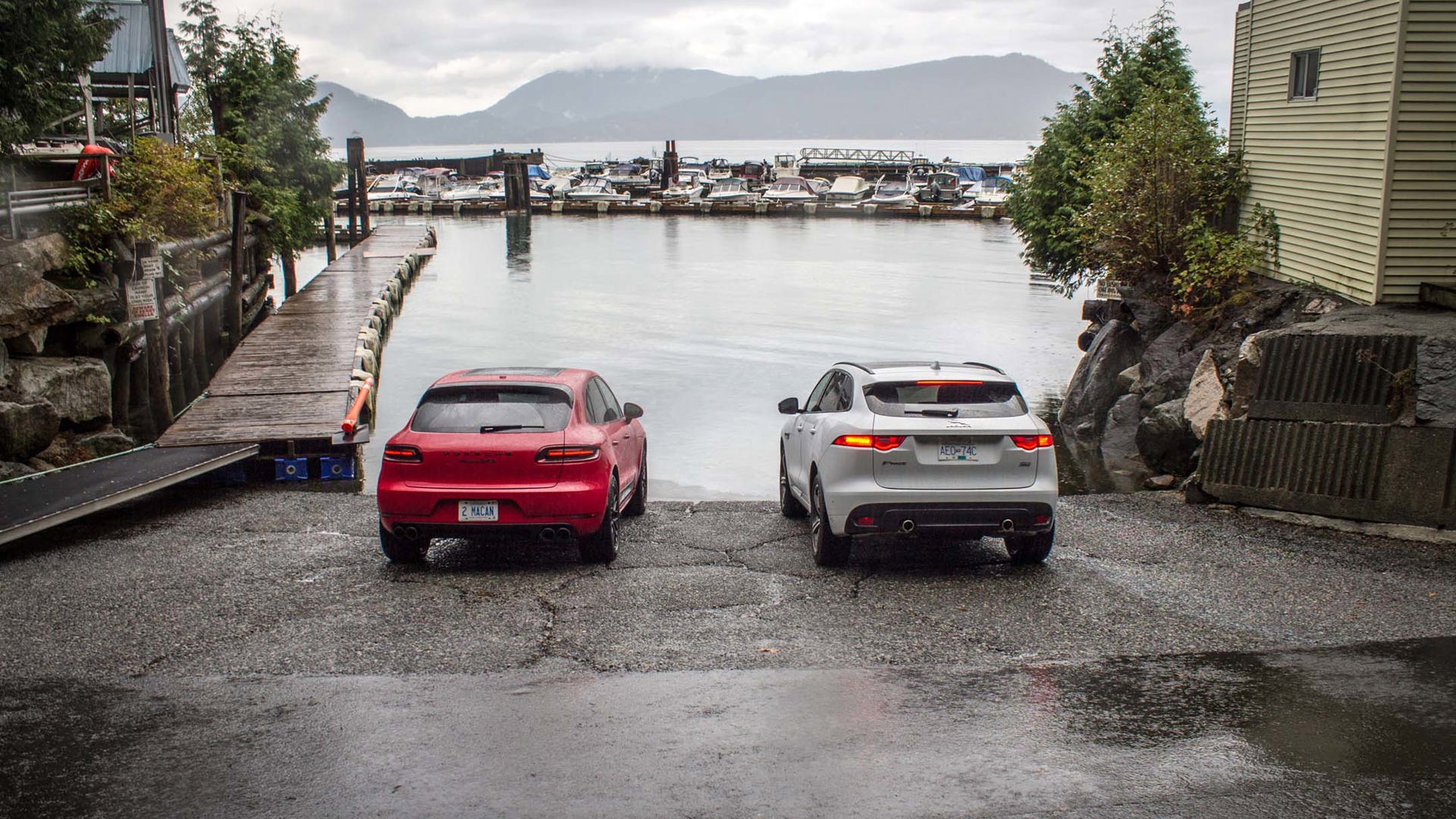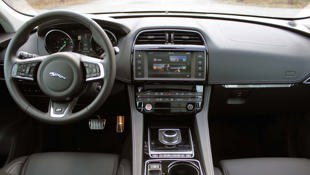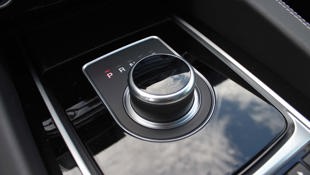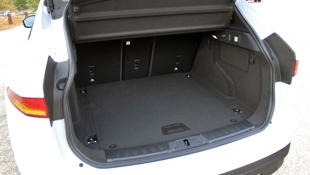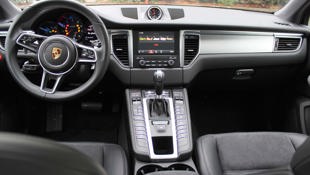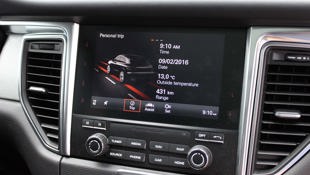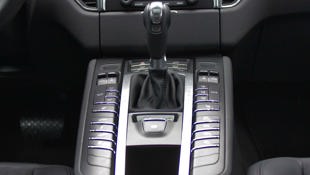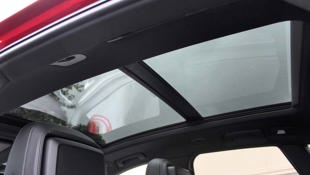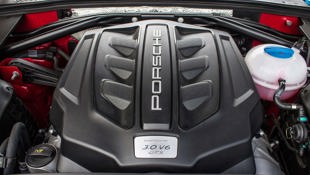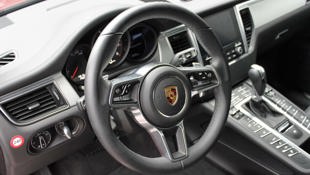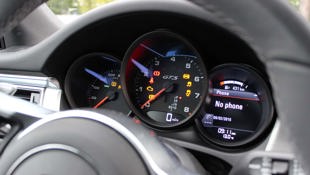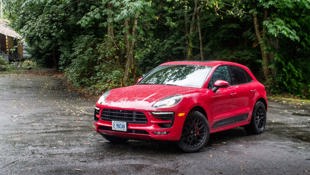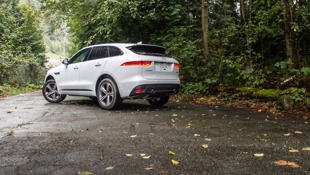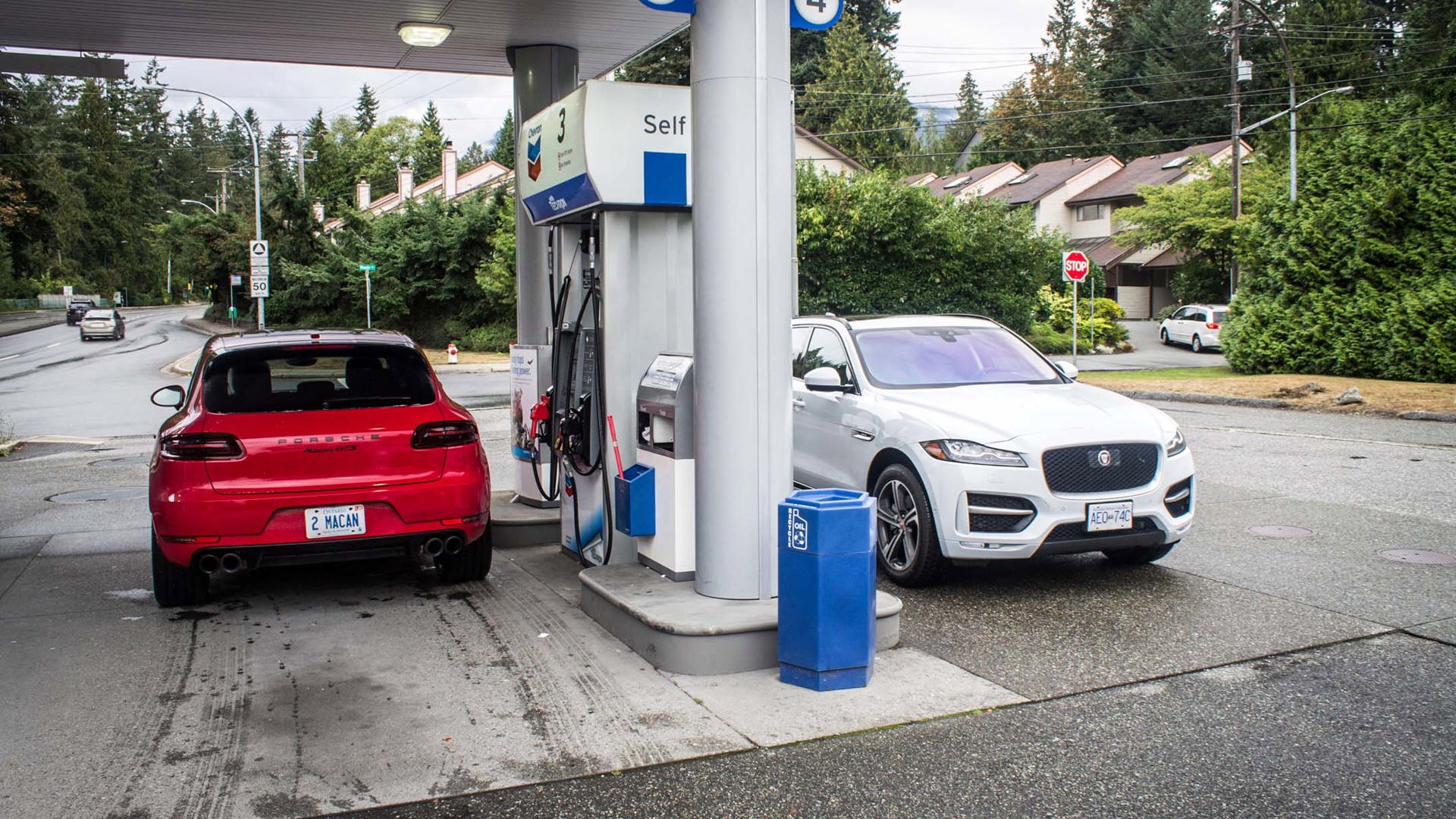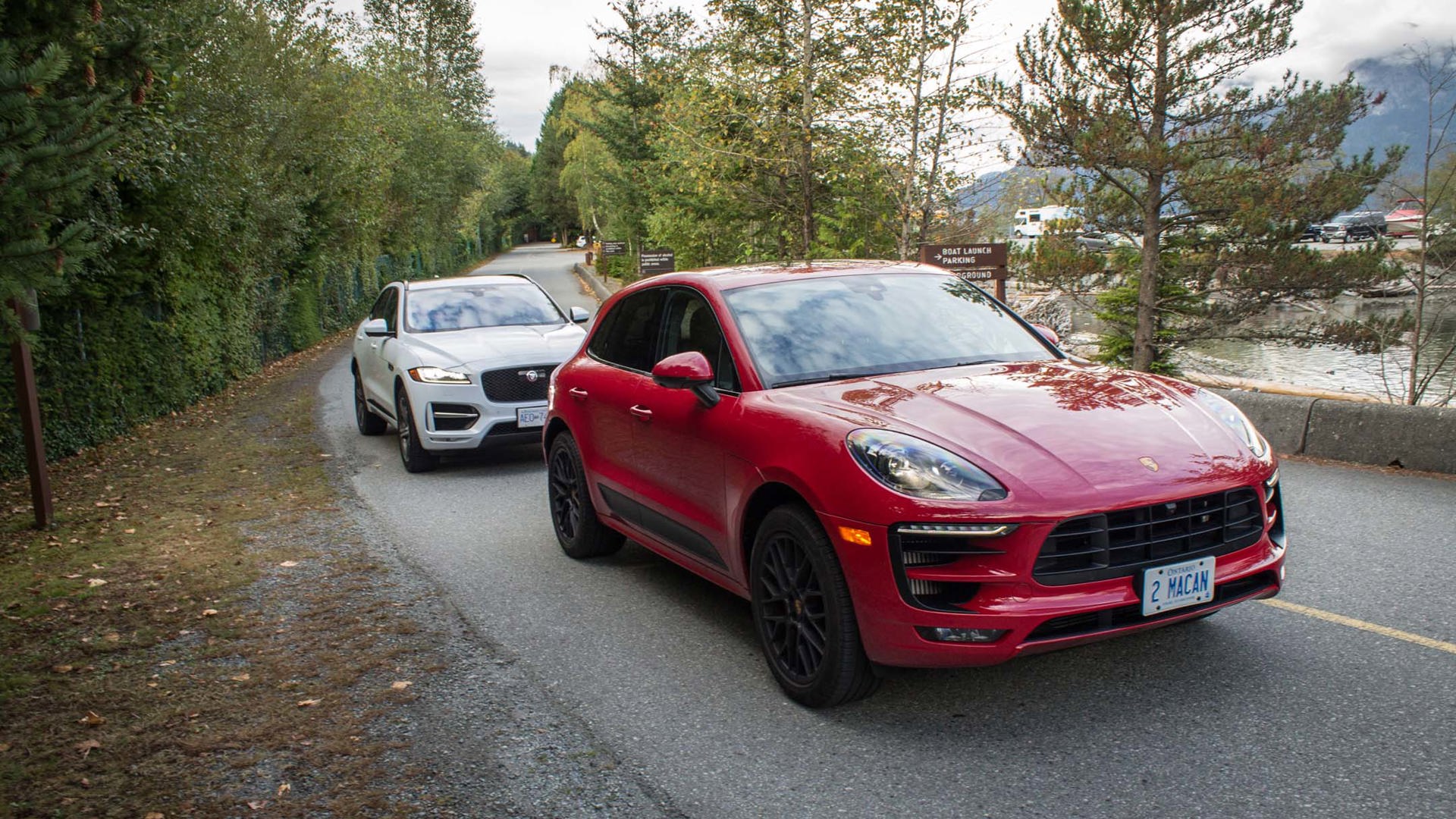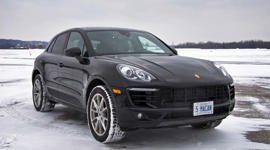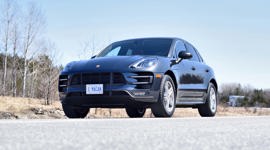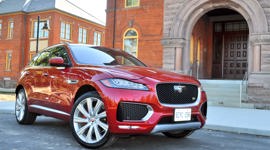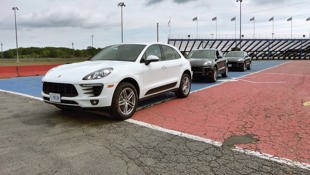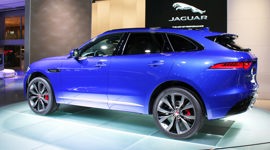Comparison Data
|
2017 Porsche Macan GTS
|
2017 Jaguar F-Pace R-Sport
|
|---|---|
|
Engine Displacement
3.0L
|
3.0
|
|
Engine Cylinders
V6
|
V6
|
|
Peak Horsepower
360 hp @ 6,000 rpm
|
340 hp @ 6,500 rpm
|
|
Peak Torque
369 lb-ft @ 1,650 rpm
|
332 lb-ft @ 3,500–5,000 rpm
|
|
Fuel Economy
13.8/10.3/12.3 (L/100 km, cty/hwy/cmb)
|
13.3/10.0/11.8 (L/100 km, cty/hwy/cmb)
|
|
Cargo Space
501 L
|
648 L
|
|
Base Price
$73,100
|
$59,900
|
|
A/C Tax
$100
|
$100
|
|
Destination Fee
$1,115
|
$1,375
|
|
Price as Tested
$86,595
|
$69,325
|
|
Optional Equipment
$10,770 – paint $3,560; navigation $1,980; park assist $1,360; connectivity $1,510; premium package (BOSE stereo, heated seats) $3,870
|
$7,950 – convenience package - $1,900; black roof rails $250; driver assist $3,100; 20-inch alloys $500; heated windshield $400; activity key $400; navigation $800; paint $600
|
Ever wish you had a short-range time machine to travel back a decade or so and blow people’s minds? *zap*
High-riding machines that have space for the family, reasonable cargo room, and handle pretty much like a car. Oh, and we’d like all that, but don’t want boring.
“Hey, did you guys know that in a few years, both Porsche and Jaguar, both traditional makers of sporting machines, will be facing off in the crossover segment?”
“Wow, that’s pretty weird. Say, what else is going on in the future. Who’s the president?”
“Um. I have to go now. Buy as many air-cooled 911s as you can.” *zap*
The 2017 Jaguar F-Pace and the 2017 Porsche Macan are blobs of inevitability. Admittedly, that doesn’t sound very flattering, but it’s the truth: the nature of the automotive market is to fill demand, and what people are currently demanding is high-riding machines that have space for the family, reasonable cargo room, and handle pretty much like a car. Oh, and we’d like all that, but don’t want boring.
Thus Porsche’s entry level machine is not a scaled-down sports car, but a crossover built to sell on a large scale. As for Jaguar, it’s all well and good to chase the sales figures of the BMW 3 Series with the XE sedan, but the profits are in going after the middle of the luxury market, where vehicles like the Audi Q3 dominate.
So, it’s Germany vs Britain all over again, except with all-wheel drive and a trunk full of groceries. Head for the twisties on a typically damp West Coast day, and let’s see which of these machines could still please a Jaguar or Porsche fan from decades past.
Styling/Exterior
Jaguar’s design language is set out by the lovely F-Type, perhaps the best car to buy if you like middle-aged men coming up to you and saying, “Hey, that’s a nice car!” The F-Pace builds on the essential elements like the grille and the cat-eyed headlights, then essentially doubles up on the sheet metal.
The result is relatively pleasing to the eye, even if it does tend to disappear into the background next to the blood-red Macan. This particular model is the R-Sport version, so comes with some cosmetic upgrades like fender vents, and a set of optional 20-inch five-blade alloy wheels. The last don’t look huge at all, dwarfed as they are by the F-Pace’s high sheet-metal-to-greenhouse ratio.
Probably the least-well-executed part of the vehicle is the rear, which appears to have been designed by someone who’s spent a lifetime building coastal defence pillboxes. The rear window is a tiny slit, leaving taillights borrowed from the F-Type floating above a wide space of empty bodywork. The white paint probably accents the effect, but somehow the Evoque manages to pull this off where the F-Pace doesn’t.
Over to the Porsche. GTS badging means this is the driver’s choice Macan, sitting in between the luxury-oriented Turbo, and the entry-level S. The GTS gets the Turbo’s standard air suspension, which means it hunkers low over its standard 20-inch multi-spoke wheels. It’s smaller than the F-Pace, with a bigger greenhouse and an almost liftback rake to the rear hatch.
It is not, however, a very pretty car. You can see how Porsche arrived at this look, developing it slowly from efforts to make the Cayenne look acceptable. Mostly though, the Macan is a froglike little machine, defined by gaping grilles and air intakes, but without a defining, cohesive presence. The Porsche may be bright red, but the F-Pace is the one that’s sticking to the bloodline.
Comfort/Interior
Sliding behind the wheel of either the Jaguar or Porsche immediately enlightens the driver to respective brand identity. While the exteriors might fade into the parking-lot crossover masses, the insides of these two machines are very different.
Hoist yourself up into the cockpit of the Macan, and it’s a tightly enclosed space where someone has just blown up a couple of calculators. There are buttons everywhere, similar to the pre-update Panamera, and the Cayenne.
However, from an ergonomic standpoint, the Macan is very good. A simple touchscreen interface makes most of the buttons redundant, and you get easy-to-use knobs for volume and tuning. The steering wheel is excellent, the same spartan three-spoker you get in the 911. I’d like to see it get the updated 911’s drive-mode control knob, but for now you’ll have to hunt near the shifter to kick things into attack mode.
The Jaguar, on the other paw, is the product of a luxury brand. The cabin is more open, with most of the buttons tucked away, and a wider, larger touchscreen than the Macan. It’s also full of theatrical tweaks, like a rotary shifter that rises from the black lacquered central tunnel whenever you start the engine, and a pulsing starter button. It can’t match the Porsche for quality though. The more you hunt around in the F-Pace’s cabin, the more plastic seems to show up. That’s not very Jaguar-ish: the company might not have been able to touch the Germans for reliability in the past, but Jags always used to feel a cut above in interior trimmings.
Comfort is a tossup. On one hand, the Macan’s seats are more heavily bolstered than the F-Pace’s, making ingress and egress much easier for the Jaguar. However, once you’re settled in, the Macan is ready for a thousand kilometre road trip without complaint. It’s flat-out excellent.
However, so too is the F-Pace pretty cushy, and if you’re going to be carrying passengers around, the Jaguar is the champion. The Macan’s rear seats are tight, almost a two-plus-two, where the F-Pace is perfectly capable of hauling around rear-seat passengers regularly. It also takes the cargo-carrying title, with 963 L of space in the rear seats to the Macan’s tight 510 L.
Technology
Jaguar’s initial ventures into onboard infotainment weren’t great. Based around a smallish touchscreen, the multiple submenus were clustered in odd ways, making for a steep learning curve and more than occasional frustration.
Porsche, in contrast, kept things so simple they lagged behind. In the case of the 911, Boxster and Cayman – all of which are designed to provide entertainment through the accelerator and steering wheel – that was probably an okay strategy. In everyday machines like the Cayenne and Macan, the lack of depth was also an annoyance.
Happily, both are now markedly improved. The Macan’s high-mounted touchscreen remains small, but it’s among the easiest to use on the market, with bright, clear icons. If you’ve got an iPhone, and chances are you do, the incorporation of Apple CarPlay into the Porsche infotainment makes things very straightforward to use. Also handy is the Macan’s integration of an LCD display into the right-hand “dial” of the instrument panel. It can display turn-by-turn instructions right in the driver’s eyeline.
The Jaguar’s wide LCD screen simply takes their previous menu layout and gives it enough space to be legible. More room means less clutter, making it easier for the driver or passenger to navigate through the various features. However, it is still an evolution of the previous setup, which means there are still a few annoyances. Once in a while, there’s a bit of a lag between tapping the screen and activation, and occasionally hitting the back button takes you back two screens instead of one.
Jaguar also has something unique with their Activity Key. Essentially a keyfob on a wristband, the Activity Key is designed for those who want to leave all their stuff in the car when you’re out for a bike ride. It works pretty well, but isn’t cheap.
Overall though, both systems are entirely more livable than previously. The Porsche is still button-y, the Jaguar is still a bit quirky next to the mainline German competition. That’s sort of how it should be.
Performance
Both crossovers, both all-wheel-drive, both powered by force-fed V6s. There are plenty of similarities between the F-Pace and the Macan, but in terms of how they drive, they’re entirely different.
The Jag’s supercharged 3.0L V6 makes 340 hp in this R-Sport trim, with peak power at 6,500 rpm and 332 lb-ft from 3,500–5,000. That’s an approximate match for the Macan S, but the GTS gets a bit of a power bump: 360 hp at 6,000 rpm, and 369 lb-ft of torque from 1,650.
It’s the torque that’s the killer, especially when the Macan’s seven-speed dual-clutch gearbox comes into play. Both vehicles are within a few kilograms of each other in curb weight – both just over 2,000 kg – but the Macan has a clear edge in acceleration.
Still, the F-Pace’s combination of blown V6 and eight-speed gearbox is no mere cruiser. When called upon, the Jag’s ’6 makes all the right noises and provides considerable thrust for a crossover. Handling is very good, and considerably more lively than you’d expect from this class of vehicle.
The F-Pace’s all-wheel-drive system is set up with a rear-drive bias, and builds on lessons learned from the all-wheel-drive variants of the F-Type. With a few winding kilometres under the wheel, the takeaway is that this thing is going to be an absolute riot once Jag’s SVR team stuffs a supercharged V8 in the nose (and they will soon enough). Body roll is composed, and the steering is quick and accurate.
But if the F-Pace is good, then the Porsche is great. That GTS badge on the flank carries a great deal of expectation, and the little Macan does its utmost to live up to expectations. Really, this car delivers on the promise of supercars like the Porsche 959; where Porsche technology was once used to tame the physics of a rear-mounted engine, now they can apply many of those same tricks to make a high-riding crossover perform nearly as well as a mid-engine Cayman.
The Macan isn’t all that much dimensionally smaller than the F-Pace, but it drives much tighter. Absolute cornering between the two is about the same, but the Porsche pulls ahead when the road bends both ways, calling for transitions. Activate the sport mode exhaust, and the Macan also sounds better than the F-Pace.
If putting the Porsche badge on the nose of a crossover dilutes the brand a bit, then the performance envelope of the GTS variant distills a bit of strength back in. It’s quick, eager and rapid: a baby Carrera4 with a backpack on. Dynamically speaking, it’s the clear winner.
Value
It’s the options, stupid. While the Macan and the F-Pace look to line up directly on base pricing, Porsche is a master of the extra add-on. Mind you, it appears Porsche fans are only too happy to accept the extra upcharges, but still – some of these additions can be positively eye-watering.
The F-Pace R-Sport starts in at $59,900, with this well-equipped model stuffed with about $10,000 in options. Some of the options make sense, like the $500 20-inch alloys, or the $400 heated windscreen. Some are a bit silly, like paying $3,100 for a driver assist package, or $800 for navigation. Features that come standard on a mid-level Corolla shouldn’t cost so much.
But if Jaguar charges a premium, Porsche is completely insane. How’s this: that red paint? A $3,560 option. Add on a navigation module that’s more than twice the price of the F-Pace’s option, and another $1,500 or so for the ability to use Apple CarPlay, and the little Macan is a costly mid-$80K machine.
In terms of operating costs, the Macan’s 12.3 L/100 km city and 10.3 L/100 km highway are about average for a small crossover. The F-Pace promises to be a little thirstier at 13.3 L/100 km city and 10.0 L/100 km highway, but in practice the mixed mileage between the pair was almost identical.
One slight annoyance to note: the F-Pace has a relatively small fuel tank, just 63 L in size. The Macan is smaller in size, but it has a more reasonable 75 L tank.
Conclusion
At heart, both the F-Pace and the Macan present a compromise. The simple fact of their existence would likely be a shock to any Jaguar or Porsche fan of even a decade or so ago (given the existence of the Cayenne, maybe not so much the Porsche).
But if a car company is to survive, it must both adapt and compromise. Heritage is all very well and good, but the future beckons impatiently and the bottom line doesn’t go in much for nostalgia. Car companies exist to build products that sell. Full stop.
To that end, the Macan and the F-Pace fill their brief in different ways. On one hand, the Macan GTS manages to somehow bend the laws of physics to turn a blobby little crossover into a screamer that wouldn’t be out of place on a racetrack. It’s just barely practical enough to count as a mainstream choice, yet still has the chops to carve up a mountain road with 90 percent of the verve of a modern 911. It doesn’t look like a Porsche, but it’s worthy of the badge on the nose.
The F-Pace, on the other hand, doesn’t stand up dynamically, but is both more stylish and more practical than the Porsche. Based simply on need, the F-Pace will work better for families, for people who care more about what they’re hauling than how fast they’re hauling it, and those who couldn’t care less about tenths of a second in acceleration advantage.
Grace, pace and space – that’s the Jaguar tagline. In the latter two columns, the F-Pace easily ticks the boxes. It’s not as fast as the Porsche, but it holds its own; it’s also easily a more practical choice.
However, where grace is concerned, the F-Pace lets the side down a little. Like the XE, it’s not quite special enough on the inside to rate as the kind of vehicle you’d choose over an X3 or Q3. You’d have to love the exterior style to look past some of the cost-cutting going on inside.
If you’re a driver, the Macan should be your pick. However, with a few provisos, the F-Pace wins this comparison by simply providing a driving experience close enough to a benchmark sport sedan, while still filling the needs of those who will buy one. Maybe it won’t completely blow the minds of fans of the past, but it’s the better vehicle for a modern world.
